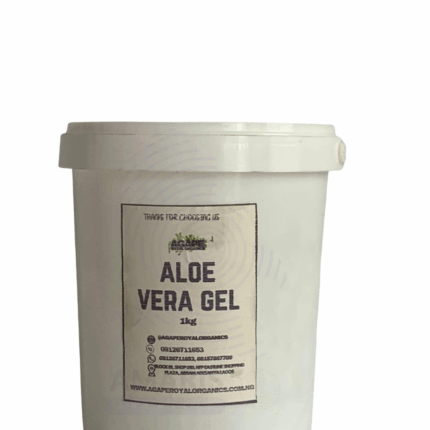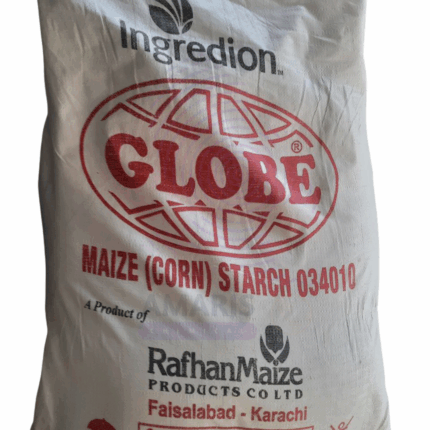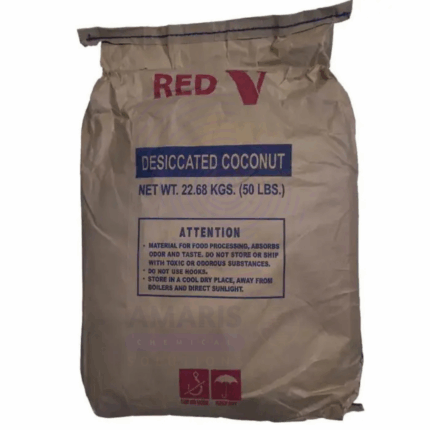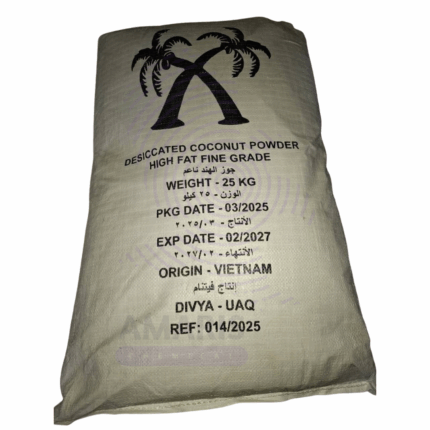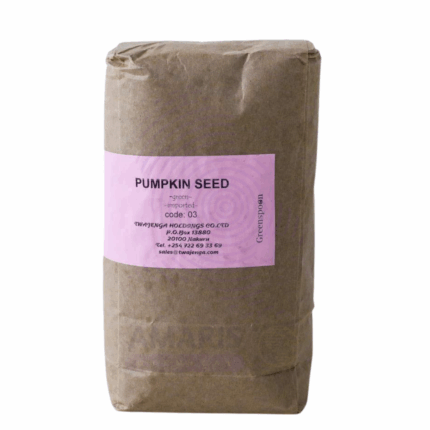Fish Collagen
Whatsapp Order
Fish Collagen is a natural protein derived from the skin, scales, and bones of various fish species through enzymatic hydrolysis or acid extraction. It is predominantly Type I collagen, known for its excellent bioavailability and biocompatibility. Fish Collagen typically appears as a fine white to off-white powder with low odor and high solubility in water and acidic solutions. It is widely prized in cosmetics, nutraceuticals, pharmaceuticals, and food industries due to its superior absorption compared to mammalian collagen, making it highly effective in skin, joint, and bone health applications. Fish Collagen supports the body’s extracellular matrix, promoting skin elasticity, hydration, and tissue repair.
Description
Table of Contents
Toggle
Fish Collagen
Primary Uses
- Cosmetics and Personal Care
- Key ingredient in anti-aging skincare products, improving skin hydration, elasticity, and reducing wrinkles and fine lines.
- Used in facial creams, serums, masks, and lotions to promote collagen synthesis and skin regeneration.
- Enhances wound healing and skin barrier function due to its bioactive peptides.
- Incorporated into hair and nail care formulations for strengthening and nourishment.
- Functions as a natural moisturizing agent improving skin texture and smoothness.
- Nutraceuticals and Dietary Supplements
- Widely used in oral collagen supplements aimed at improving joint health, reducing osteoarthritis symptoms, and promoting cartilage regeneration.
- Supports bone density and connective tissue strength, especially beneficial for aging populations.
- Promotes muscle mass retention and recovery in athletes and active individuals.
- Formulated in powders, capsules, drinks, and gummies for improved skin, hair, nails, and overall wellness.
- Often combined with vitamins C and hyaluronic acid to boost collagen synthesis and antioxidant protection.
- Pharmaceutical Industry
- Used in formulations targeting tissue repair and regeneration, including wound dressings and burn treatments.
- Applied in drug delivery systems as a biocompatible matrix for controlled release.
- Investigated for applications in orthopedic implants, cartilage repair, and tissue engineering scaffolds.
- Employed in biomedical hydrogels and scaffolds supporting cell growth and tissue regeneration.
- Food Industry
- Incorporated as a functional protein in fortified beverages, protein bars, and health foods.
- Enhances texture and nutritional value of gelatins, desserts, and confectionery.
- Used to improve mouthfeel and protein content in specialty nutrition products.
Secondary Uses
- Biomedical Research
- Utilized in cell culture as a substrate to study cell adhesion and growth.
- Used as a biomaterial for experimental regenerative medicine and 3D bioprinting.
- Material Science and Packaging
- Investigated for biodegradable film formation as a sustainable packaging material.
- Explored for use in wound dressing films with enhanced healing properties.
- Veterinary Applications
- Supplemented in pet nutrition for joint and coat health.
- Used in wound healing and tissue repair products for animals.
KEY PRODUCT FEATURES
1. Basic Identification Attributes
- Chemical Name: Hydrolyzed fish collagen peptides (primarily Type I collagen)
- Common/Trade Name: Fish Collagen
- CAS Number: Not specific; varies by peptide composition
- HS Code: 3504.00 (Peptones and their derivatives) or 2106.90 (Food preparations)
- Molecular Formula: Variable depending on peptide chain length
- Synonyms: Marine collagen, fish gelatin, fish-derived collagen peptides, hydrolyzed fish collagen
2. Physical & Chemical Properties
- Physical State: Fine powder
- Color & Odor: White to off-white; mild characteristic odor
- Solubility: Highly soluble in water and acidic solutions
- Molecular Weight: Typically 1,000 – 5,000 Dalton (depending on hydrolysis degree)
- pH: Usually acidic to neutral (pH 3-7) in solution
- Stability: Stable under dry, cool, dark storage; sensitive to moisture and high temperature
3. Safety & Hazard Attributes
- Hazard Class (GHS): Generally recognized as safe (GRAS)
- Toxicity: Low toxicity; non-irritant and non-sensitizing at typical use levels
- Exposure Limits: No occupational exposure limits established
4. Storage & Handling Attributes
- Storage Conditions: Store in a cool, dry, and dark environment in airtight containers to prevent moisture uptake and microbial growth
- Container Type: Food-grade plastic drums or vacuum-sealed bags
- Shelf Life: 12–24 months under recommended storage conditions
- Handling Precautions: Avoid moisture and prolonged exposure to heat
5. Regulatory & Compliance Attributes
- Approved for use in food, cosmetics, and dietary supplements by FDA, EFSA, and other international bodies
- Complies with ISO and GMP standards for cosmetic and food-grade collagen
- Allergen information: Derived from fish; label accordingly for consumer awareness
6. Environmental & Health Impact
- Biodegradability: Fully biodegradable and environmentally friendly
- Ecotoxicity: Low impact on aquatic and terrestrial ecosystems
- Bioaccumulation: Not applicable
- Carcinogenicity/Mutagenicity: No evidence of carcinogenic or mutagenic effects
SAFEY HANDLING PRECAUTIONS
Safety Handling Precautions
- PPE Required: Gloves, dust mask if handling powder in bulk, safety goggles recommended
- Handling Guidelines: Use in well-ventilated areas; avoid inhalation of fine powder
- Storage Measures: Keep containers tightly closed, protect from moisture and heat
- Hygiene Practices: Wash hands thoroughly after handling; avoid ingestion and eye contact
First Aid Measures
- Inhalation: Move to fresh air if irritation occurs; seek medical attention if symptoms persist
- Skin Contact: Wash with water and soap; seek medical advice if irritation develops
- Eye Contact: Rinse eyes with plenty of water for 15 minutes; consult physician if irritation persists
- Ingestion: Generally safe; rinse mouth and seek medical advice if large quantities ingested
Firefighting Measures
- Fire Hazards: Combustible organic material; may produce toxic fumes on burning
- Extinguishing Media: Water spray, foam, dry chemical, or CO₂
- Special Precautions: Firefighters should use self-contained breathing apparatus and protective gear
- Decomposition Products: Carbon monoxide, carbon dioxide, nitrogen oxides, and other toxic fumes
Related products
Aloe Vera Gel
Aloe Vera Gel is a clear, jelly-like substance extracted from the inner leaf of the Aloe vera plant. It is widely used in skincare for its soothing, hydrating, and healing properties. Rich in vitamins (especially A, C, and E), enzymes, and amino acids, Aloe Vera Gel is commonly applied to treat sunburns, minor cuts, skin irritation, and dryness. It also has mild anti-inflammatory and antibacterial effects, making it a popular natural remedy in both cosmetic and medicinal products.
Cetyl Alcohol Flakes
Cetyl Alcohol Flakes is a high-purity fatty alcohol derived mainly from natural sources such as palm oil and coconut oil. Presented as white to off-white waxy flakes, this product contains at least 98% pure cetyl alcohol, ensuring consistent performance and quality. It is valued for its excellent emollient, thickening, and emulsifying properties and is widely used in personal care, pharmaceutical, and industrial formulations. The flake form facilitates easy handling, melting, and dosing in manufacturing processes. Cetyl Alcohol 98% Flakes contributes to the texture, stability, and moisturizing properties of various formulations, providing a non-greasy, smooth finish.
Corn Starch Food Grade
$ 1.20
Corn Starch Food Grade is a fine, white, powdery carbohydrate extracted from the endosperm of corn kernels (Zea mays). It is a natural, tasteless, and odorless polysaccharide composed primarily of amylose and amylopectin. Corn starch is widely used as a thickening, stabilizing, and binding agent in food products due to its excellent gelatinization properties. It serves as a gluten-free alternative to wheat flour in many culinary and industrial applications. Corn starch is valued for its versatility, digestibility, and neutral flavor profile, making it a staple ingredient in both home cooking and commercial food production.
Desiccated Coconut
Desiccated Coconut is finely shredded, dried coconut meat derived from mature coconuts (Cocos nucifera). It is produced by removing the coconut water, then drying the white coconut kernel to reduce moisture content to less than 3%. The drying process preserves the natural flavor, aroma, and nutritional content while extending shelf life. Desiccated coconut is commonly available in various particle sizes and grades, suitable for culinary, bakery, confectionery, and food processing applications. It is valued for its rich texture, nutty flavor, and ability to add moisture and fat to food products.
Glycerin
$ 1.20
Glycerin, also known as glycerol, is a colorless, odorless, viscous liquid with a sweet taste and hygroscopic properties. It is a trihydroxy alcohol (triol) used extensively across food, pharmaceutical, cosmetic, and industrial applications. Food-grade glycerin is produced through hydrolysis, saponification, or transesterification of fats and oils, ensuring compliance with stringent purity standards. It is supplied in bulk (e.g., 250kg drums) for large-scale applications where non-toxic, biodegradable humectants or solvents are required. Glycerin is widely appreciated for its moisture-retaining ability, solubility, lubricity, and stabilizing properties.
Natural Sweet Potatoes Extract
Natural Sweet Potatoes Extract is a concentrated substance derived from the roots of sweet potatoes (Ipomoea batatas) through processes such as solvent extraction, freeze-drying, or spray drying. Rich in antioxidants, vitamins (especially vitamin A and C), minerals, and natural pigments like beta-carotene and anthocyanins, this extract is valued for its nutritional benefits and vibrant natural color. It is widely used in food, beverage, nutraceutical, cosmetic, and pharmaceutical applications for its health-promoting and coloring properties.
Pumpkin Kernels
Pumpkin kernels, also known as pepitas, are the edible seeds extracted from pumpkins. They are nutrient-rich, containing healthy fats, proteins, vitamins, and minerals, making them a popular ingredient in food products and snacks. Supplied in bulk 25 kg packaging, pumpkin kernels are widely used for their flavor, texture, and nutritional benefits in culinary and industrial applications.
Vitamin E Acetate Powder
Vitamin E Acetate Powder, also known as DL-Alpha-Tocopheryl Acetate Powder, is a dry, free-flowing, encapsulated form of Vitamin E, standardized to contain 50% of active DL-Alpha-Tocopheryl Acetate. It is designed for easy handling and uniform mixing in dry formulations and is ideal for use in nutritional supplements, fortified foods, and animal feed. The microencapsulation enhances stability against oxidation, heat, and light, ensuring long shelf life.


 Preservatives(food)
Preservatives(food) Flavor Enhancers
Flavor Enhancers Acidulants
Acidulants Sweeteners
Sweeteners Antioxidants
Antioxidants Colorants(food)
Colorants(food) Nutraceutical Ingredients (food)
Nutraceutical Ingredients (food) Nutrient Supplements
Nutrient Supplements Emulsifiers
Emulsifiers
 Collectors
Collectors Dust Suppressants
Dust Suppressants Explosives and Blasting Agents
Explosives and Blasting Agents Flocculants and Coagulants
Flocculants and Coagulants Frothers
Frothers Leaching Agents
Leaching Agents pH Modifiers
pH Modifiers Precious Metal Extraction Agents
Precious Metal Extraction Agents
 Antioxidants(plastic)
Antioxidants(plastic) Colorants (Pigments, Dyes)
Colorants (Pigments, Dyes) Fillers and Reinforcements
Fillers and Reinforcements Flame Retardants
Flame Retardants Monomers
Monomers Plasticizers
Plasticizers Polymerization Initiators
Polymerization Initiators Stabilizers (UV, Heat)
Stabilizers (UV, Heat)
 Antifoaming Agents
Antifoaming Agents Chelating Agents
Chelating Agents Coagulants and Flocculants
Coagulants and Flocculants Corrosion Inhibitors
Corrosion Inhibitors Disinfectants and Biocides
Disinfectants and Biocides Oxidizing Agents
Oxidizing Agents pH Adjusters
pH Adjusters Scale Inhibitors( water)
Scale Inhibitors( water)
 Antioxidants(cosmetic)
Antioxidants(cosmetic) Emollients
Emollients Fragrances and Essential Oils
Fragrances and Essential Oils Humectants
Humectants Preservatives
Preservatives Surfactants(cosmetic)
Surfactants(cosmetic) Thickeners
Thickeners UV Filters
UV Filters
 Fertilizers
Fertilizers Soil Conditioners
Soil Conditioners Plant Growth Regulators
Plant Growth Regulators Animal Feed Additives
Animal Feed Additives Biostimulants
Biostimulants Pesticides (Herbicides, Insecticides, Fungicides)
Pesticides (Herbicides, Insecticides, Fungicides)
 Active Pharmaceutical Ingredients (APIs)
Active Pharmaceutical Ingredients (APIs) Excipients
Excipients Solvents(pharmaceutical)
Solvents(pharmaceutical) Antibiotics
Antibiotics Antiseptics and Disinfectants
Antiseptics and Disinfectants Vaccine Adjuvants
Vaccine Adjuvants Nutraceutical Ingredients (pharmaceutical)
Nutraceutical Ingredients (pharmaceutical) Analgesics & Antipyretics
Analgesics & Antipyretics
 Analytical Reagents
Analytical Reagents Solvents(lab)
Solvents(lab) Chromatography Chemicals
Chromatography Chemicals Spectroscopy Reagents
Spectroscopy Reagents microbiology-and-cell-culture-reagents
microbiology-and-cell-culture-reagents Molecular Biology Reagents
Molecular Biology Reagents Biochemical Reagents
Biochemical Reagents Inorganic and Organic Standards
Inorganic and Organic Standards Laboratory Safety Chemicals
Laboratory Safety Chemicals Specialty Laboratory Chemicals(Special Laboratory Equipment)
Specialty Laboratory Chemicals(Special Laboratory Equipment)
 Demulsifiers
Demulsifiers Hydraulic Fracturing Fluids
Hydraulic Fracturing Fluids Scale Inhibitors(oil)
Scale Inhibitors(oil) Surfactants(oil)
Surfactants(oil) Drilling Fluids
Drilling Fluids
 Dyes and Pigments
Dyes and Pigments Bleaching Agents
Bleaching Agents Softening Agents
Softening Agents Finishing Agents
Finishing Agents Antistatic Agents
Antistatic Agents
 Admixtures
Admixtures Waterproofing Agents
Waterproofing Agents Sealants and Adhesives
Sealants and Adhesives Curing Compounds
Curing Compounds Concrete Repair Chemicals
Concrete Repair Chemicals Anti-Corrosion Coatings
Anti-Corrosion Coatings
 Surfactants(cleaning)
Surfactants(cleaning) Builders
Builders Enzymes
Enzymes Solvents (Cleaning)
Solvents (Cleaning) Fragrances
Fragrances
 Electronic Chemicals
Electronic Chemicals Catalysts
Catalysts Lubricants
Lubricants Photographic Chemicals
Photographic Chemicals Refrigerants
Refrigerants Automotive chemicals
Automotive chemicals Pyrotechnic Chemicals
Pyrotechnic Chemicals
 Biodegradable Surfactants
Biodegradable Surfactants Bio-based Solvents
Bio-based Solvents Renewable Polymers
Renewable Polymers Carbon Capture Chemicals
Carbon Capture Chemicals Wastewater Treatment Chemicals
Wastewater Treatment Chemicals
 Pigments
Pigments Solvents(paint)
Solvents(paint) Specialty Coatings
Specialty Coatings Binders/Resins
Binders/Resins Additives
Additives Driers
Driers Anti-Corrosion Agents
Anti-Corrosion Agents Functional Coatings
Functional Coatings Application-Specific Coatings
Application-Specific Coatings
 Fresh Herbs
Fresh Herbs Ground Spices
Ground Spices Whole Spices
Whole Spices Spice Blends
Spice Blends Dried Herbs
Dried Herbs
 Leavening Agents
Leavening Agents Dough Conditioners
Dough Conditioners Flour Treatments
Flour Treatments Fat Replacers
Fat Replacers Decoratives
Decoratives Preservatives(baking)
Preservatives(baking)
 Plasticizers & Softeners
Plasticizers & Softeners Reinforcing Agents
Reinforcing Agents Adhesion Promoters
Adhesion Promoters Vulcanizing Agents
Vulcanizing Agents Antidegradants
Antidegradants Blowing Agents
Blowing Agents Fillers & Extenders
Fillers & Extenders Accelerators & Retarders
Accelerators & Retarders



